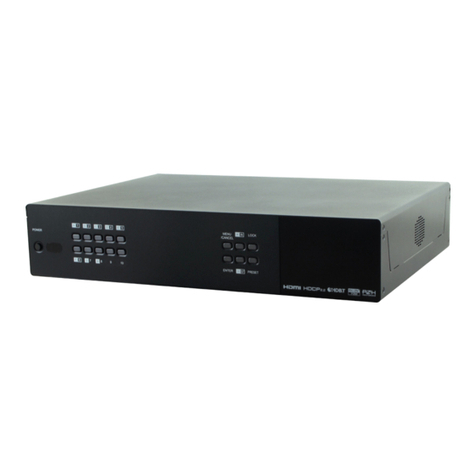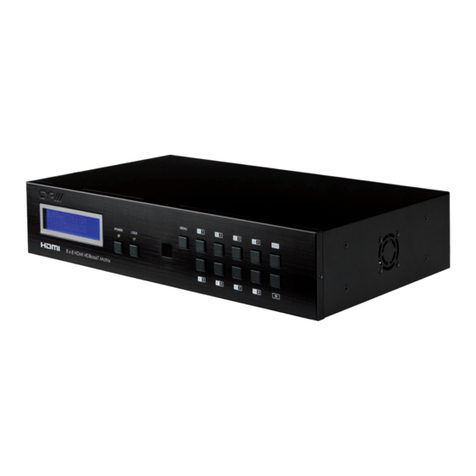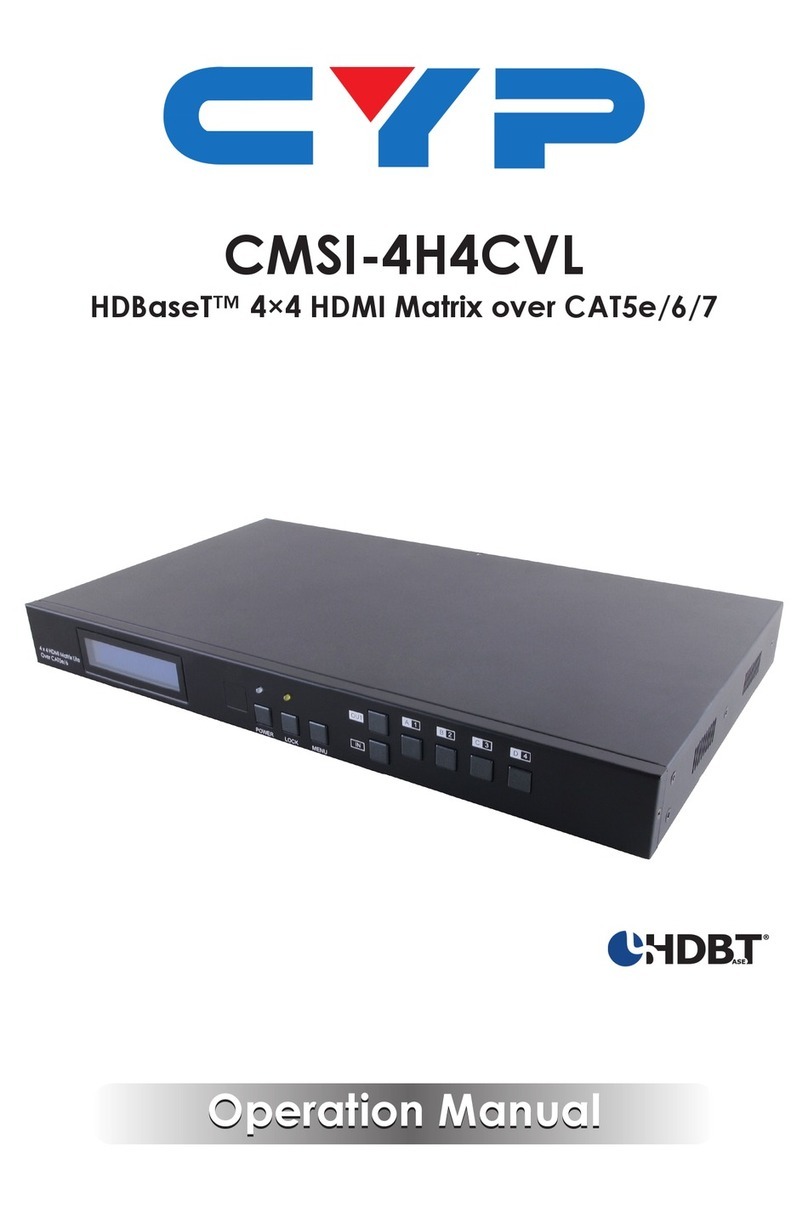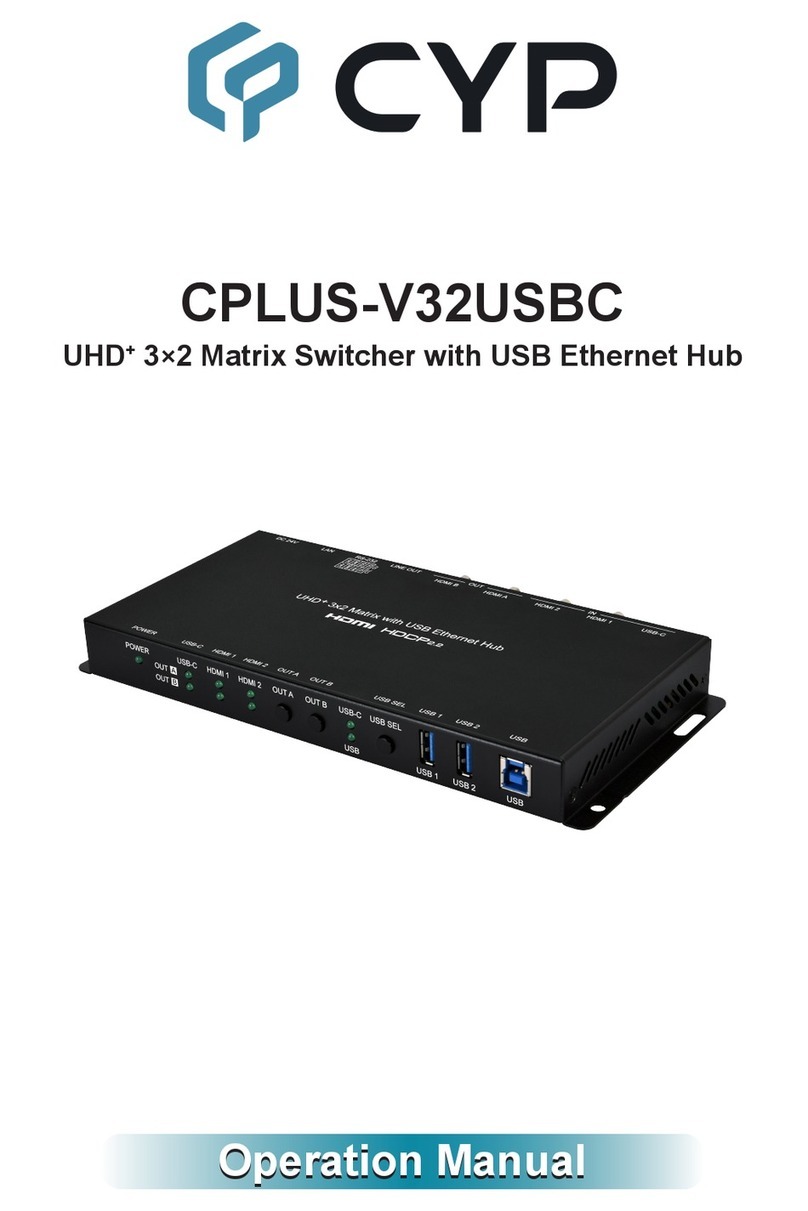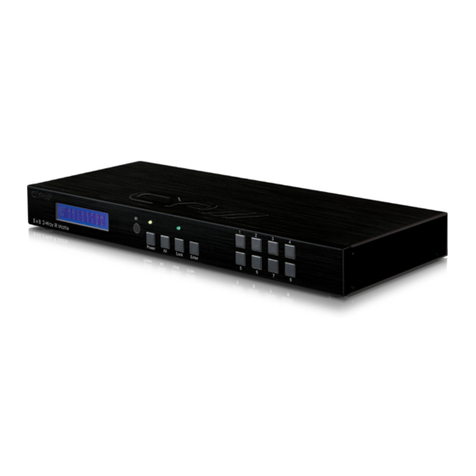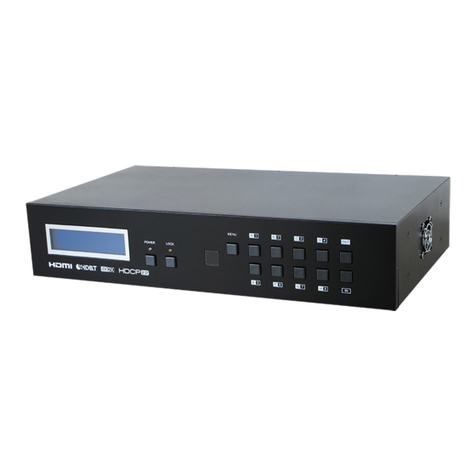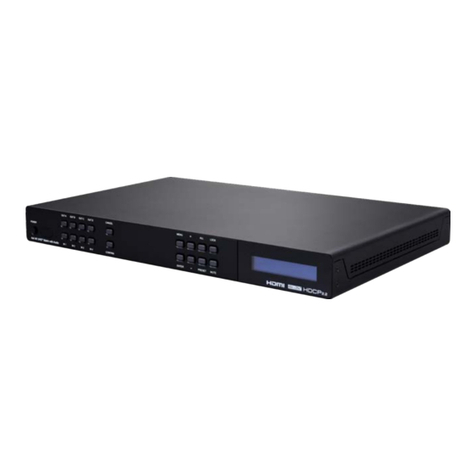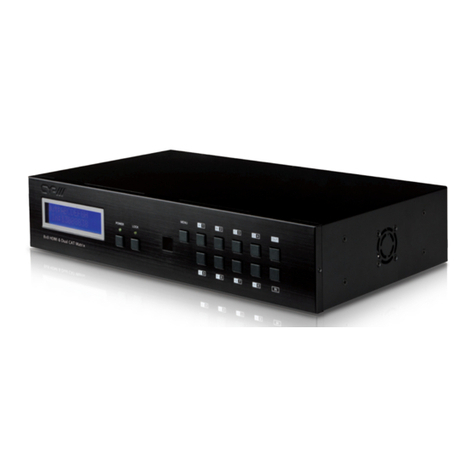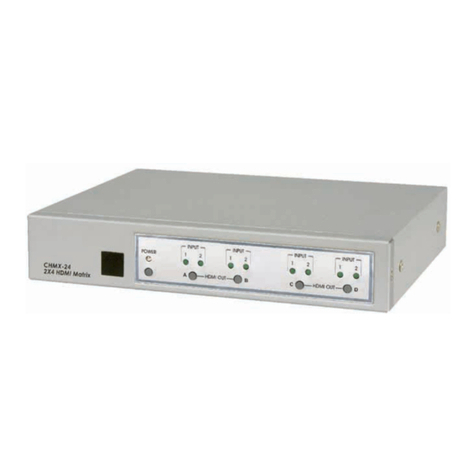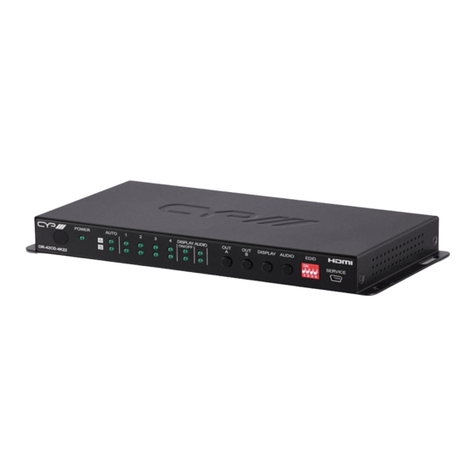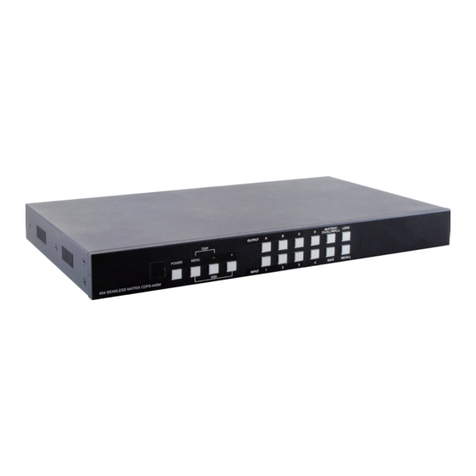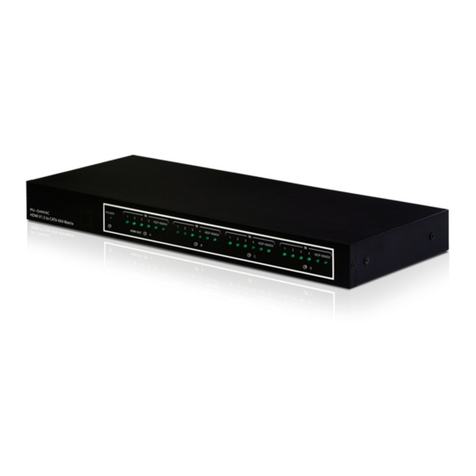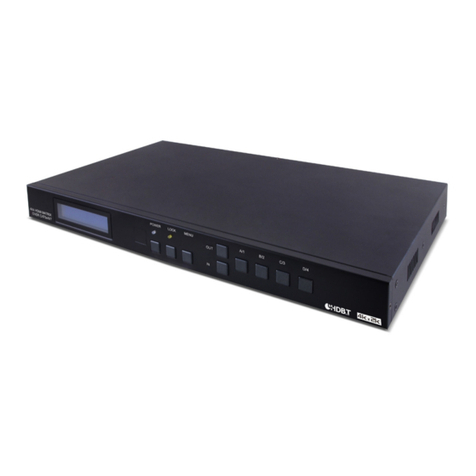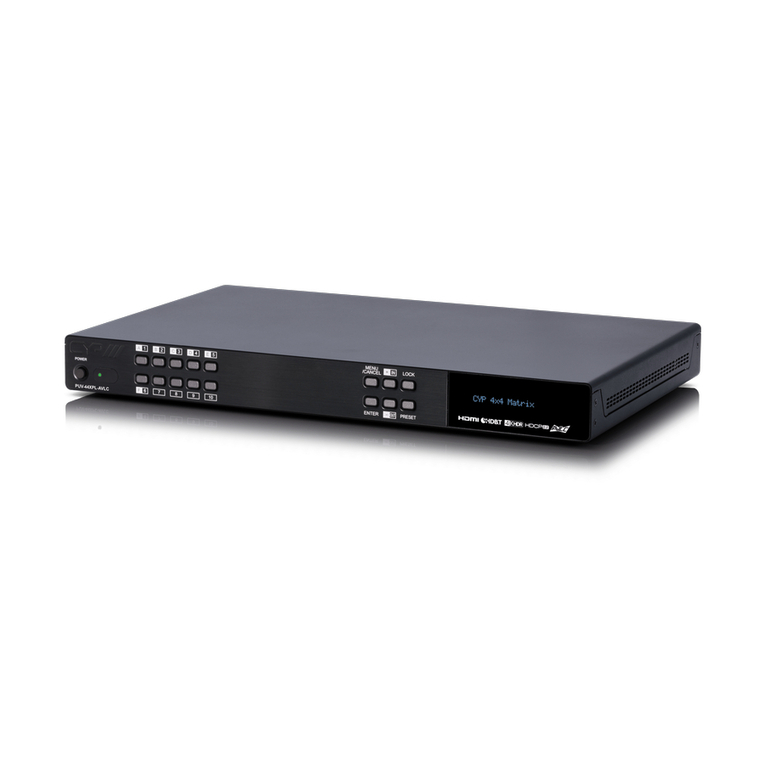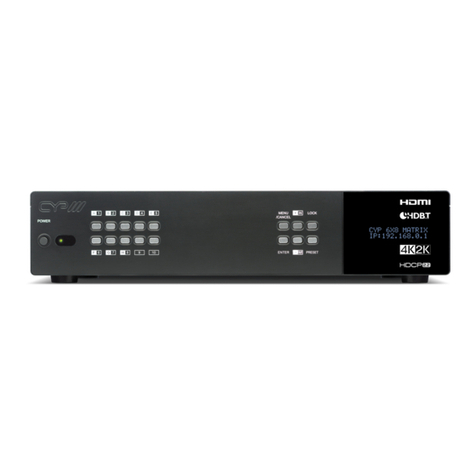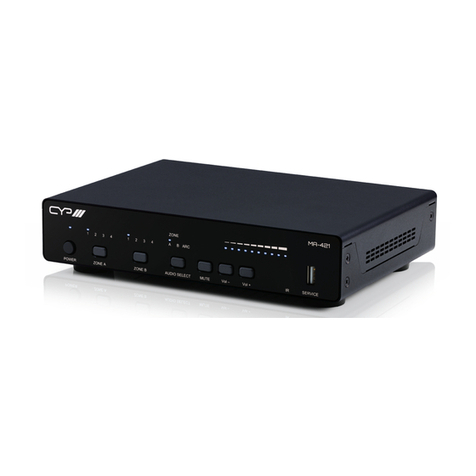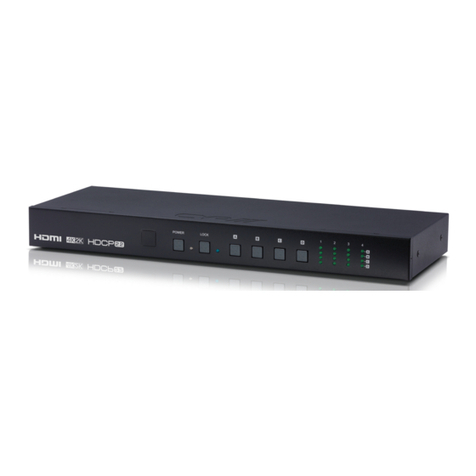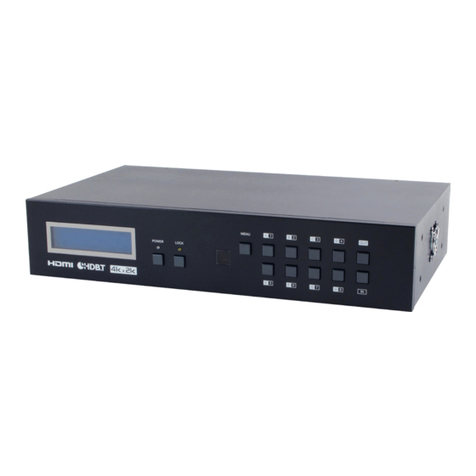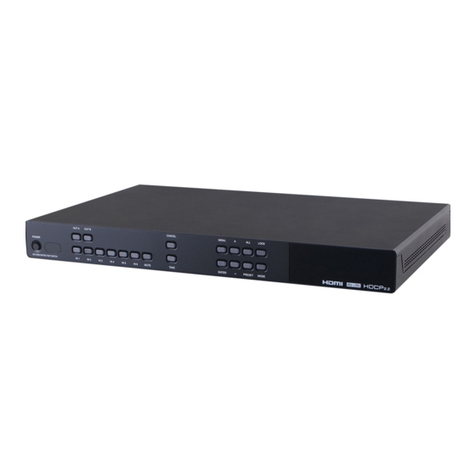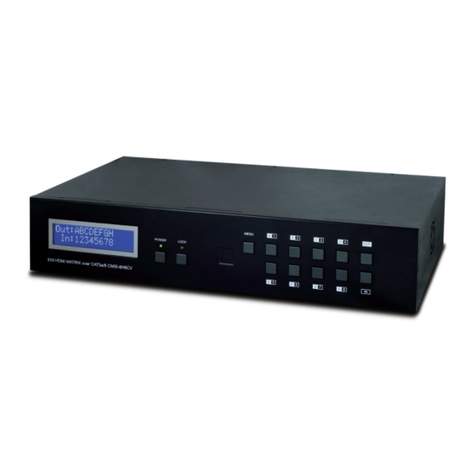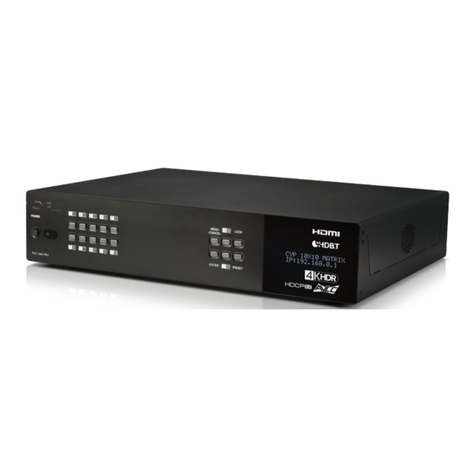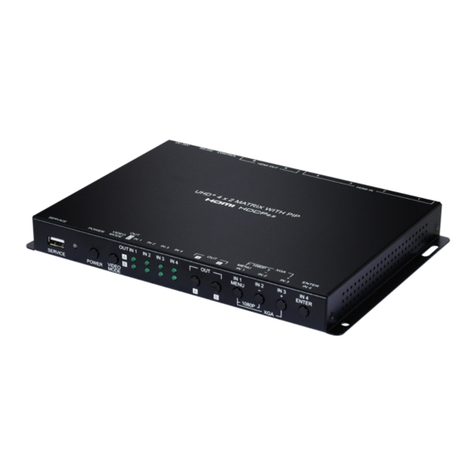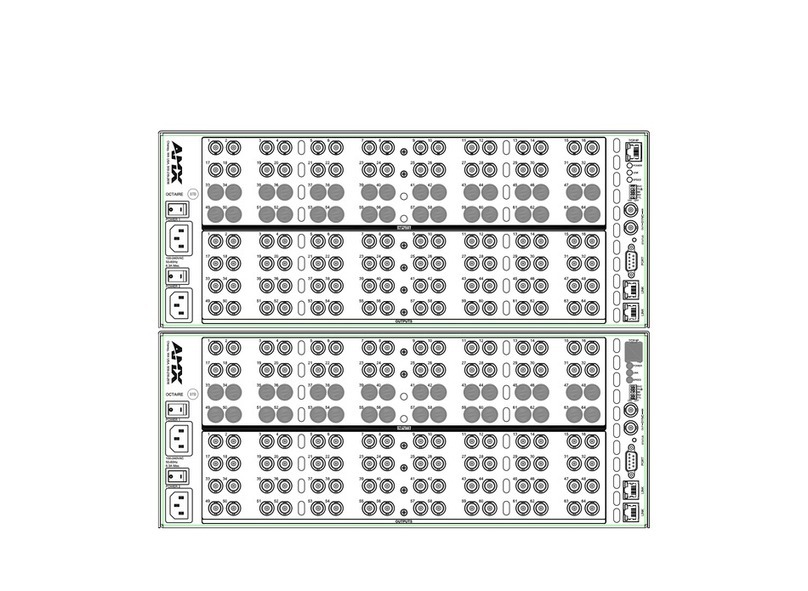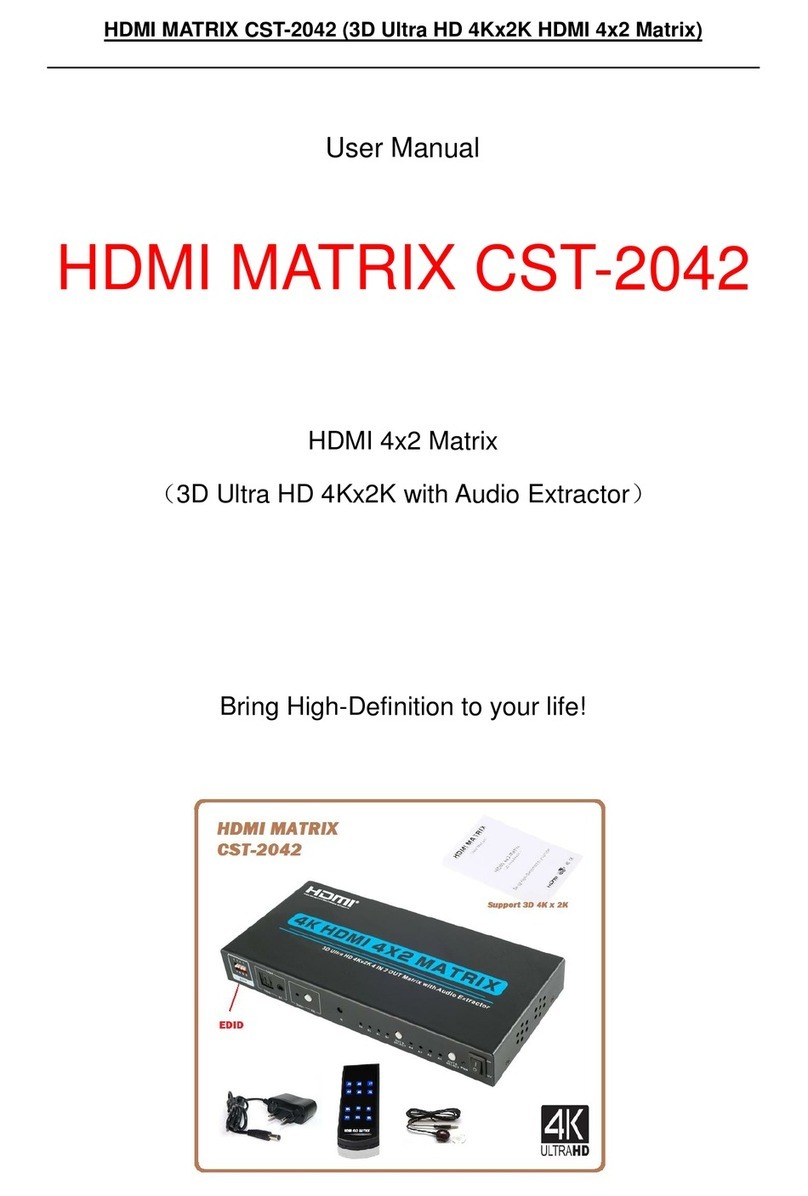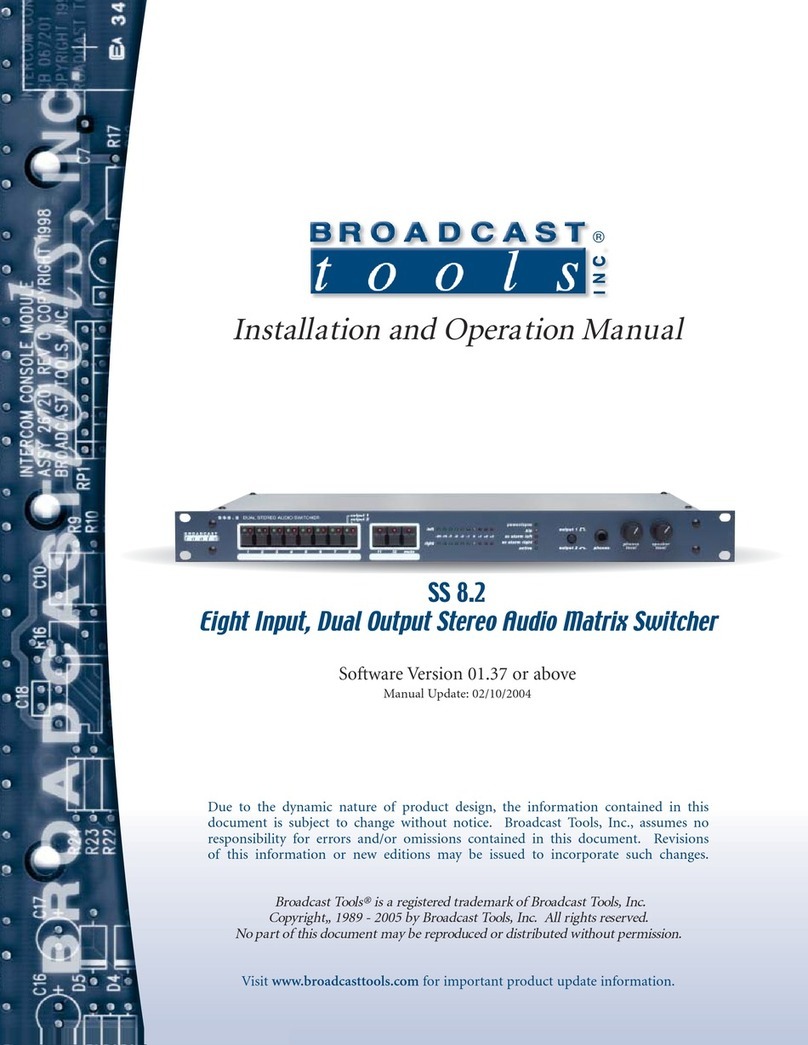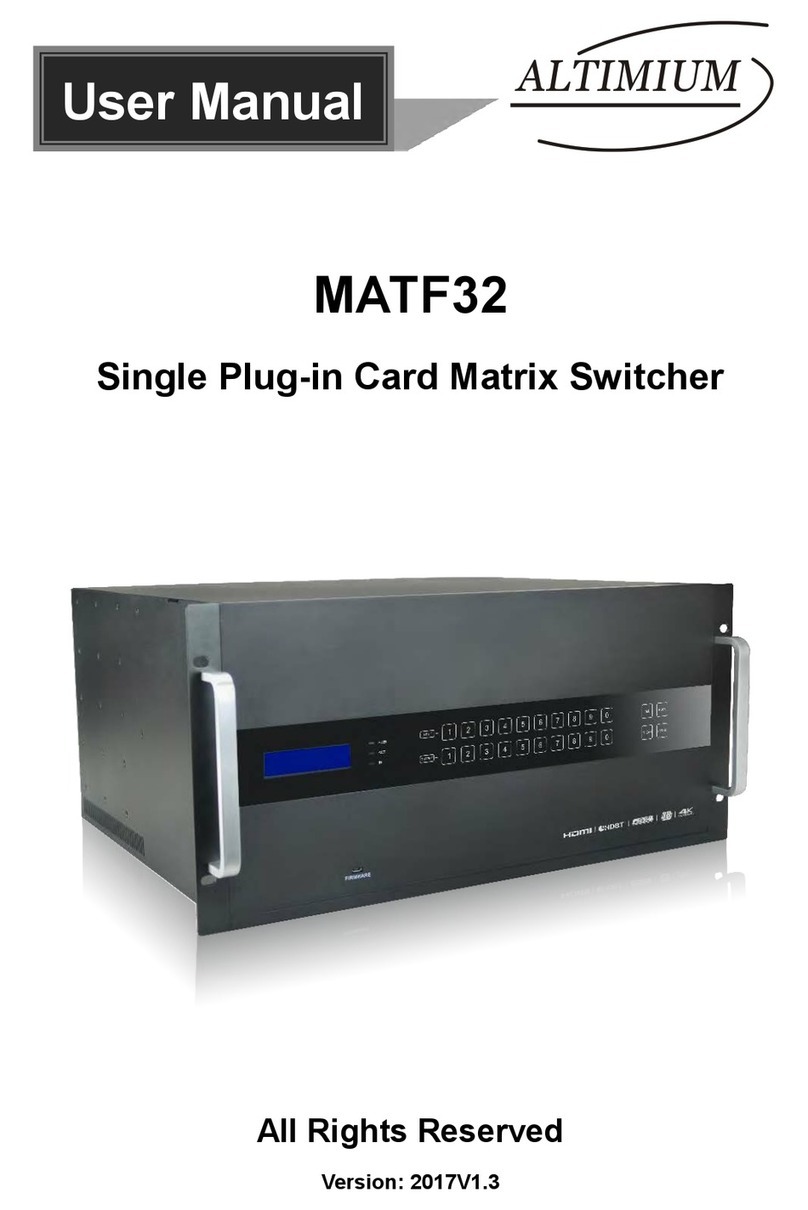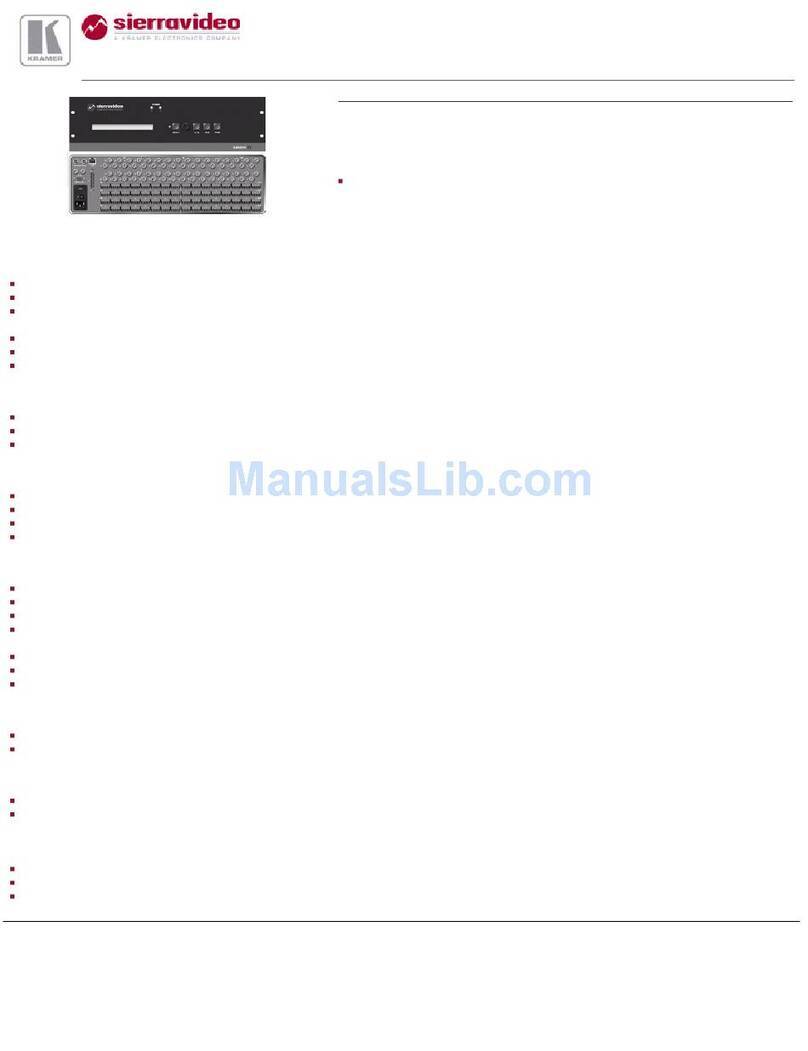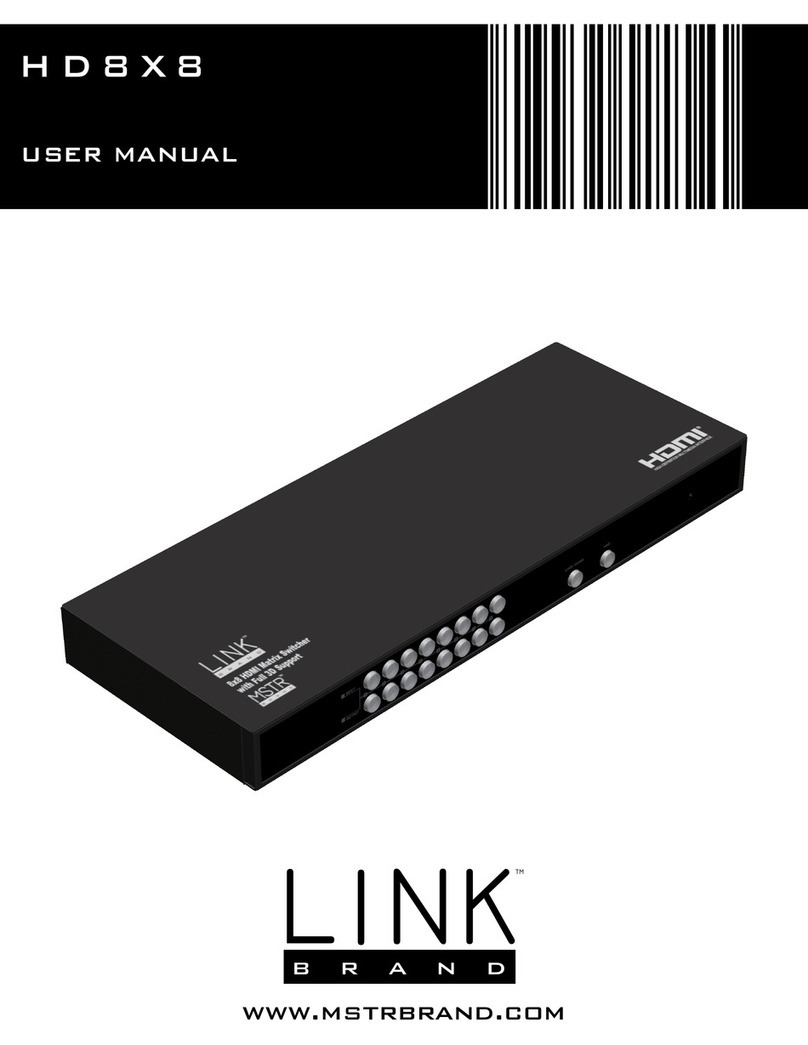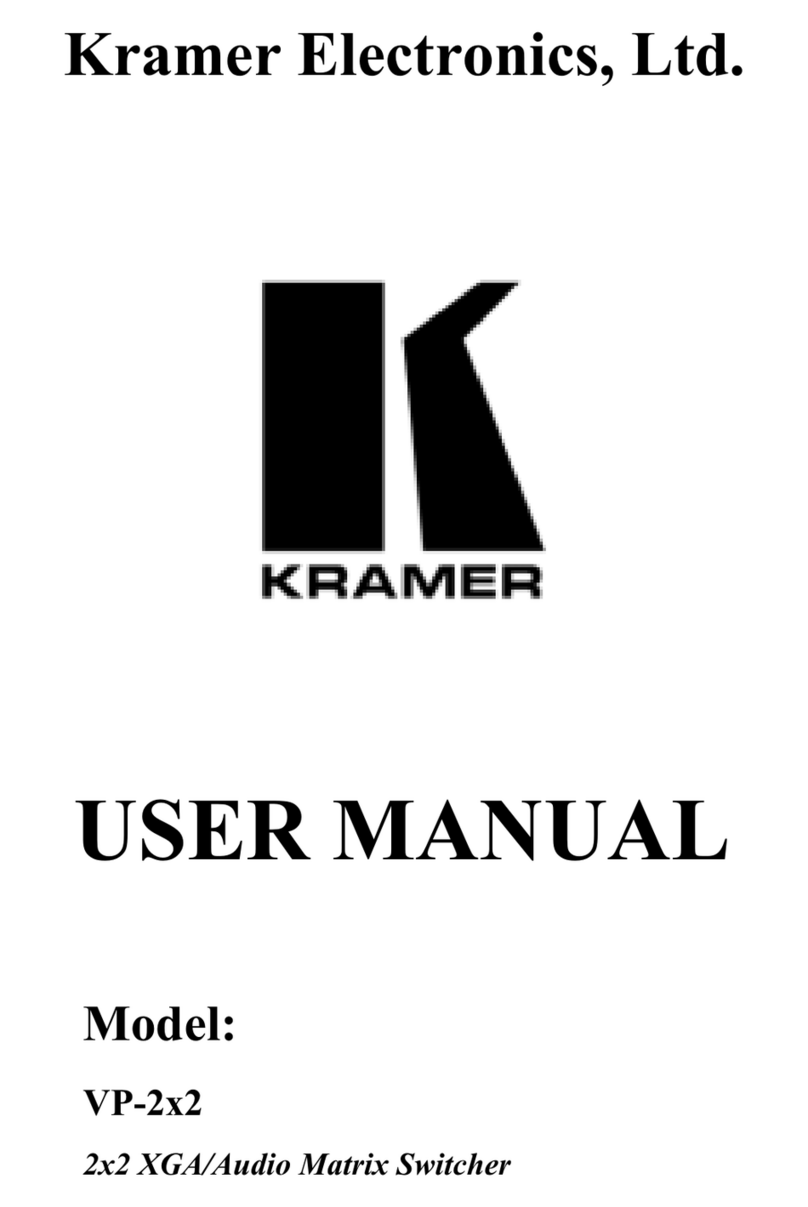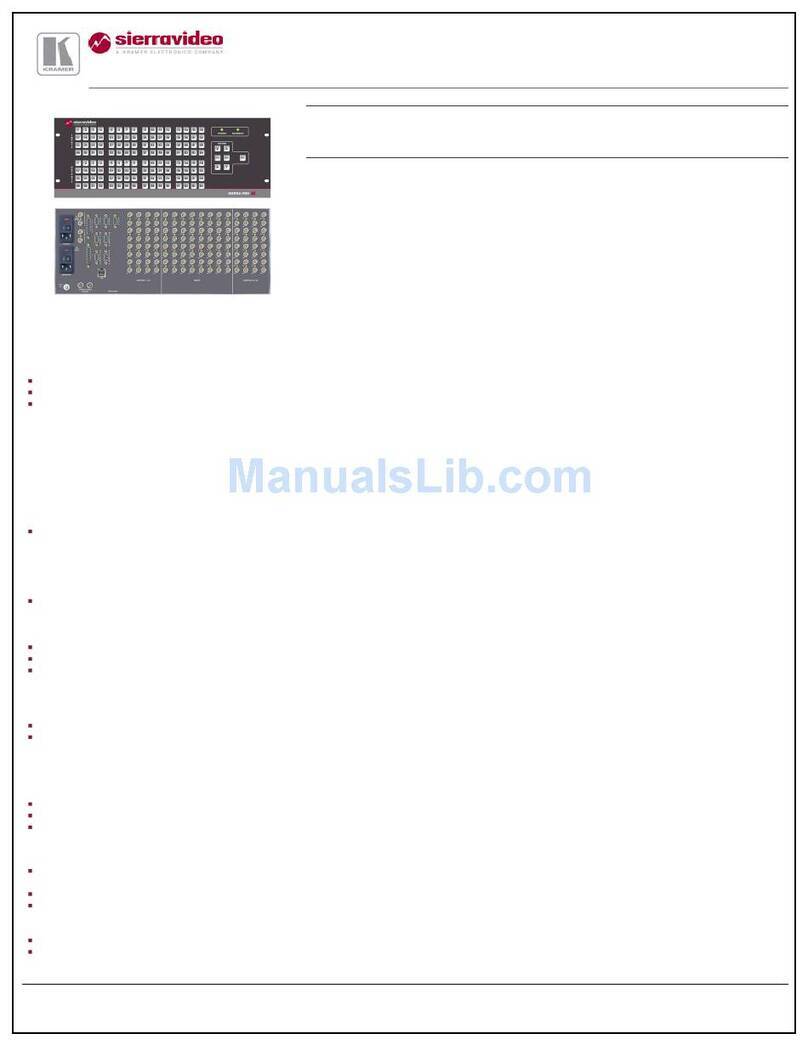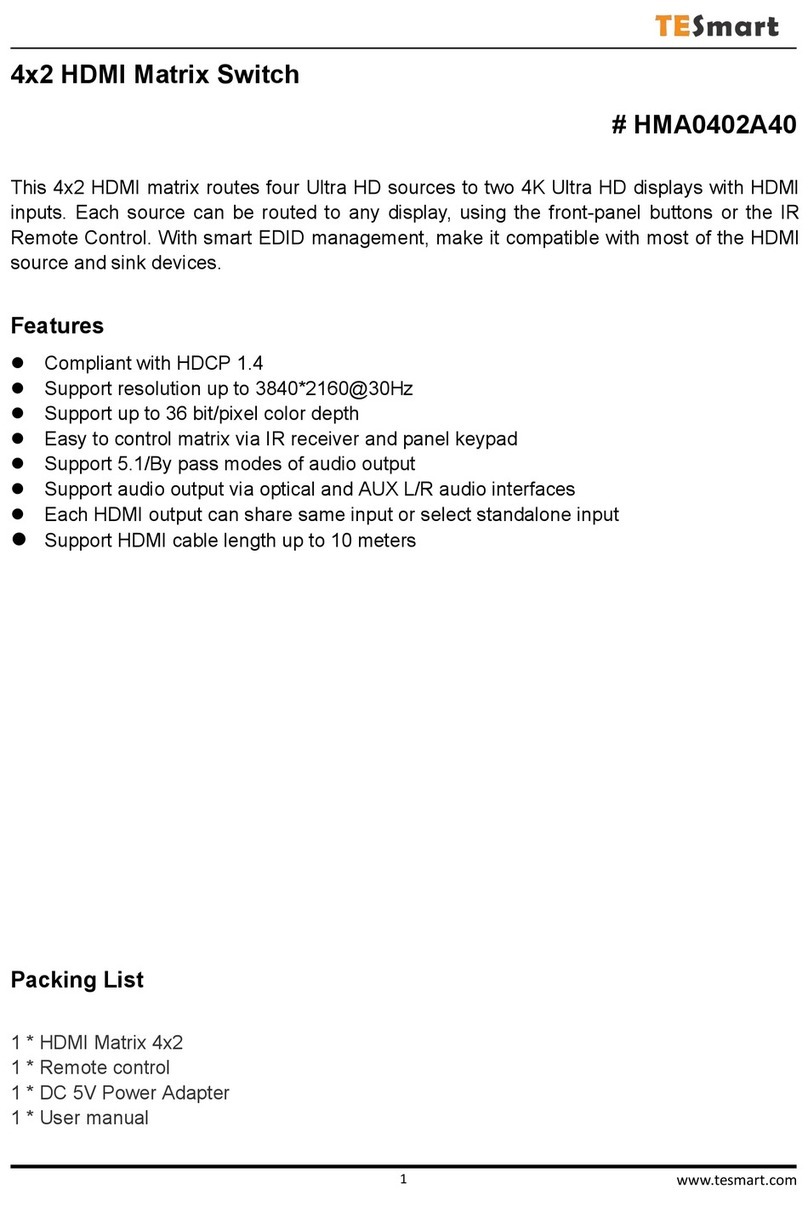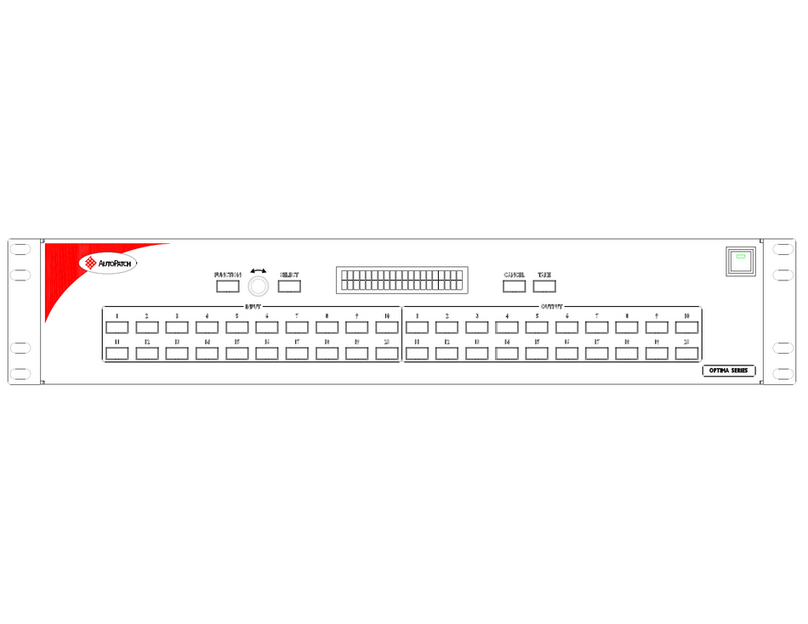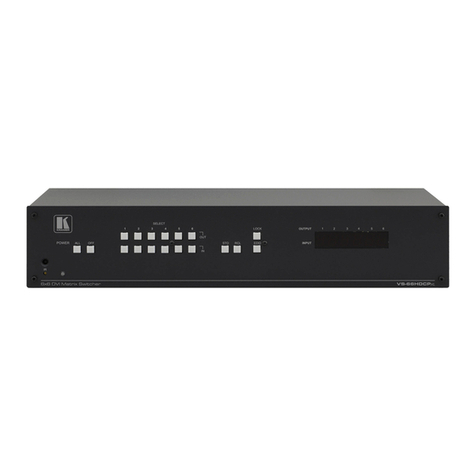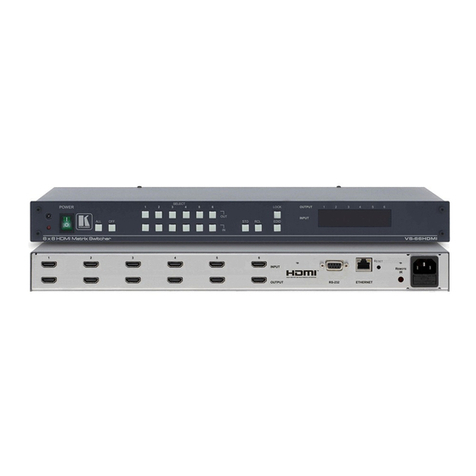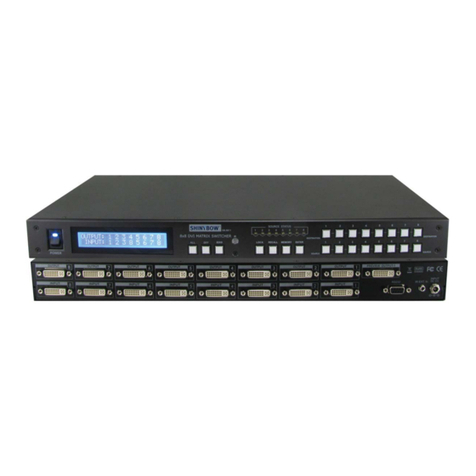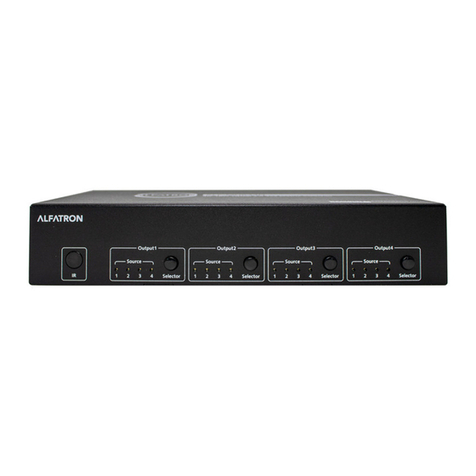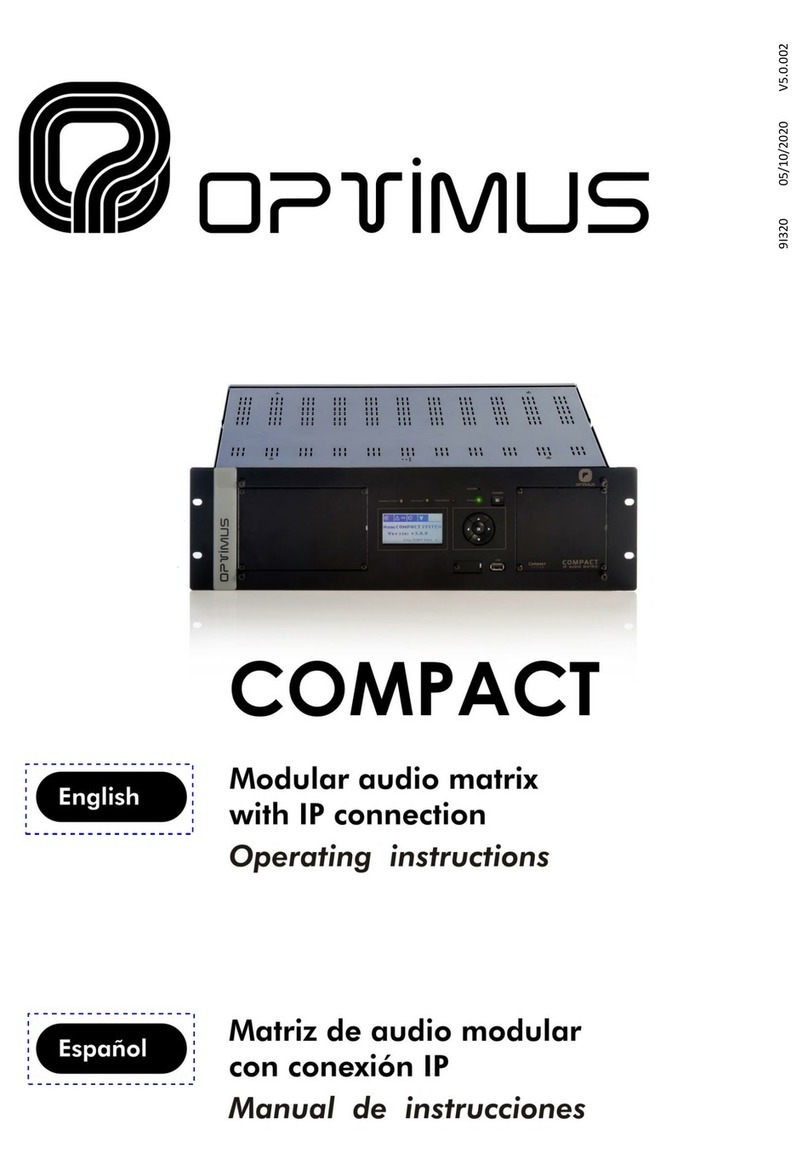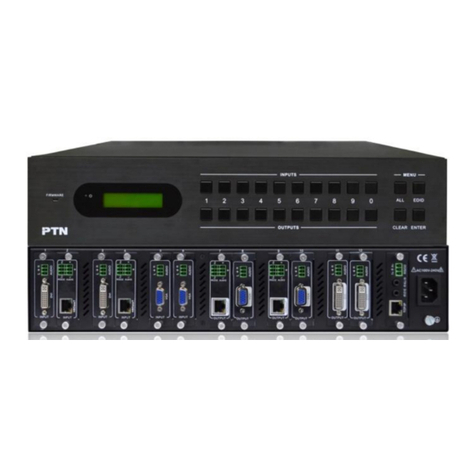9
1CONTROL: Web GUI control (refer to Sections 6.9 and 6.10).
2RS-232: Connect to a PC or control system with D-Sub 9-pin cable for
the transmission of RS-232 commands (see Section 6.6-6.8 for details).
3ALL IR OUT: Connect to the IR blaster for IR signal transmission to the
source side. Place the IR blaster in direct line-of-sight of the equipment
to be controlled for it will blaster out all signal received from the IR IN
at the receiver sides.
4ALL IR IN: Connect to the IR extender for IR signal reception. Ensure that
remote being used is within the direct line-of-sight of the IR extender
for it will send out the signal to all receiver's IR OUT.
5SERVICE: Manufacturer use only.
6IR OUT 1~8: Connect to the IR blasters for IR signal transmission. Place
the IR blaster in direct line-of-sight of the equipment to be controlled
for it will blaster out the IR signal received from the receiver side
choosen by input selection.
7IR IN 1~8: Connect to the IR extenders for IR signal reception. Ensure that
remote being used is within the direct line-of-sight of the IR extender
for it will send out the IR signal to the selected receiver's IR OUT.
8CAT5e/6/7 OUT 1~8: Connect from these CAT outputs to the CAT input
port of the receiver units with a single CAT5e/6/7 cable for HDMI Audio/
Video and IR/RS-232 control signal transmission.
9HDMI IN 1~8: Connect to the HDMI input source devices such as a DVD
player or a Set-top Box with HDMI cable or DVI to HDMI cable.
10 DC 24V MAIN POWER: Plug the 24 V DC power supply into the unit and
connect the adaptor to an AC outlet.
11 PoC 24V: Plug the 24 V PoC power supply into the unit and connect
the adaptor to an AC outlet. This unit will power PoC (Power over Cable)
capable receiver units.
Warning: Please do not connect the CAT5e/6/7 cable into the receiver's
LAN port.
